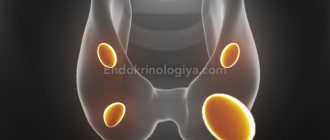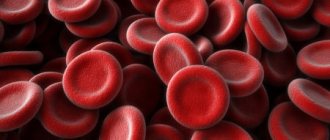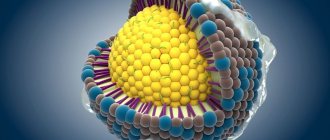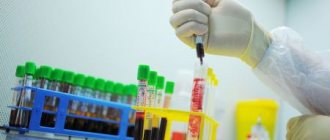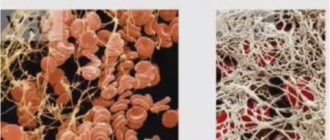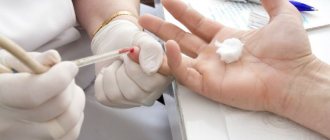The lipid spectrum is a complex of laboratory biochemical conical analyzes of blood composition, which is aimed at the most accurate assessment of the state of the metabolic process of lipids in the body.
The lipid spectrum biochemistry indicator includes:
- Total cholesterol index (TC);
- Concentration of triglyceride (TG) molecules;
- The high molecular density lipid index is HDL molecules;
- Very low molecular density lipoprotein index - VLDL molecules;
- Low molecular density lipid (LDL) indicator;
- Atherogenic coefficient (CAT).
When an extended analysis of the lipid spectrum is carried out, then the following are highlighted in the transcript:
- Apo A (apo-protein A) molecules;
- Apo B (apo protein B) molecules.
Effect on the body
Cholesterol is the general name for fat inside the body.
Cholesterol is an important component of plasma blood and affects many processes that occur in the body:
- Cholesterol takes a structural part in all human membrane cells and gives them firmness and elasticity;
- With the help of cholesterol, the process of producing bile acids occurs;
- The synthesis of vitamin E, A and vitamin D occurs by influencing the processes of synthesis of cholesterol molecules;
- Lipids increase immunity and delay the penetration of harmful toxins into the membrane, which helps increase cell resistance;
- Lipids are involved in the production of sex hormones by adrenal cells - the hormones estrogen and testosterone, as well as corticosteroid hormones;
- Responsible for the formation and functioning of joint and bone tissue cells;
- Protects nerve fibers from the external environment with a dense and elastic sheath;
- Lipids are found in the cerebrospinal fluid and connect the brain and spinal cord cells.
Cholesterol is a hydrophobic component that cannot move on its own along the bloodstreams of the bloodstream system, therefore protein compounds apoproteins are attached to cholesterol molecules, which are transport conductors of lipids to the periphery of human organs.
The complex of cholesterol with a protein compound is called lipoprotein (lipoprotein).
What the analysis shows
The lipid profile is examined to detect pathological processes in metabolism; based on the results of the analysis, the following deviations from the norm can be found:
- Atherosclerosis. Classic diagnosis in the context of fat detection. Almost always, high cholesterol and other similar compounds indicate the development of this condition. Even if the diagnosis was not previously confirmed. In any case, it is necessary to re-examine the patient.
The essence of the change is the deposition of cholesterol and other substances on the walls of the arteries.
These plaques interfere with blood flow, do not allow tissues to be properly nourished and provided with oxygen, and as the pathological process progresses, trophism decreases to a critical level, which can be fatal.
- Heart disorders. Among them, ischemic disease, a recent heart attack or precursors of one, angina pectoris, and a host of other options. The need to assess lipid concentrations is dictated by the high probability of provoking these conditions by metabolic disorders.
- History of stroke. Often, ischemic damage is caused by atherosclerosis. Blockage of the artery leads to problems with nutrition, and then to the complete impossibility of trophism in the local area.
- Diseases of the endocrine system. Diabetes mellitus, thyroid disorders and other problems. This also includes excess weight. Excess body weight is almost always associated with high lipid concentrations.
- Disorders of the digestive tract.
Of course, jumps and smooth changes in the level of fatty compounds cannot unambiguously indicate one or another disease mentioned above. The sign is too general and nonspecific. However, assessment of the level can be a starting point for identifying the disorder.
Other diagnostic methods are also used to more clearly assess the condition; the question remains at the discretion of the specialist.
Types of lipids
There are several types of lipoproteins depending on the amount of protein compound in the molecule:
- High molecular density lipoproteins in the lipid spectrum are lipid molecules consisting of the largest percentage of protein at their core. The transport properties of HDL are quite developed and the molecules move very quickly along the bloodstream, collect free cholesterol and deliver it to the liver for further utilization by liver cells with the help of bile acids. The release of excess lipids occurs through the digestive tract through feces. The HDL fraction of molecules in the lipid spectrum is the good type of cholesterol;
- Low molecular density lipoproteins and very low molecular density in the lipid spectrum (LDL and VLDL molecules) are lipid fractions that provoke atherosclerotic changes in the body and the development of systemic atherosclerosis, which is the main provocateur of the development of myocardial infarction and cerebral stroke. The functional responsibilities of these molecules are to transport fat to all cells of a living organism. But due to the low density of molecules that have the ability to disintegrate along the route and settle on the arterial endothelium, these fractions of lipoproteins received the characteristic of bad or harmful cholesterol;
- Triglyceride molecules in the lipid spectrum - TGs belong to neutral lipids, which, at high concentrations in plasma blood, can become provocateurs of systemic atherosclerosis;
- CAT - atherogenic coefficient in the lipid spectrum is the ratio of high-density cholesterol to low-density lipid molecules. CAT is calculated using a special formula;
- Apo A (apoprotein A) is a protein compound that is part of HDL molecules and is the main transport carrier of cholesterol in them;
- Apo B (apoprotein B) are proteins that are part of LDL molecules and are transporters of cholesterol molecules to all cells of a living body. If in the analysis of the lipid spectrum - apo B is increased, this is a sign of a violation of the fat metabolic process, and the development of quite serious pathologies of the blood flow system and cardiac organ.
There are several types of lipoproteins
What indicators are included in the lipid profile?
It is necessary to familiarize yourself in detail with what indicators are included in biochemistry using the lipid profile method:
- Total cholesterol index in human blood. Cholesterol is the main fat in the human body, without which not a single cell can function. There are many beneficial properties of cholesterol - without it, sex hormones are not produced, and with the help of cholesterol molecules, the cell membrane has elasticity and firmness. Cholesterol helps improve the functioning of the immune system, as well as restore the normal functionality of the nervous system. TC is an important index in the lipid profile, because the indicator is significantly higher than normal (normal from 3.20 mmol/liter to 5.60 mmol/liter) indicates the pathology of hypercholesterolemia and the development of systemic atherosclerosis;
- The main lipid fraction of the body is high molecular density lipoproteins. It is important that the HDL fraction is normal or even slightly higher than normal, because the effect of high molecular weight lipids has a beneficial effect on the blood flow system - HDL molecules cleanse the bloodstream of free cholesterol, as well as from lipid sedimentation of low molecular weight fractions. An indicator of 0.90 mmol/liter is the optimal value in decoding for the fraction of HDL molecules;
- Fraction of low molecular density lipoprotein (LDL) molecules. These lipids are the main and main transporters of fat to the peripheral parts of the human body, but LDL molecules can also cause a lot of harm to the human body. The molecule of this lipoprotein has no hardness and may disintegrate during transportation. The remains of the molecule settle on the arterial endothelium, forming a cholesterol tumor, which over time leads to the development of systemic atherosclerosis. The normal fraction of LDL molecules in plasma blood is from 1.710 mmol/liter to 3.50 mmol/liter;
- A fraction of lipoprotein molecules of very low molecular density. This is a dangerous fraction of lipoproteins, because through the process of lipolysis it is transformed into a fraction of LDL molecules and triglyceride molecules. The normal fraction of VLDL molecules is from 0.260 mmol/liter - 1.040 mmol/liter;
- Triglyceride molecules are neutral fats and are a source of calories and energy in the body. If a disorder or anomaly occurs in lipid metabolism, then the concentration of triglyceride molecules is high, this can cause systemic atherosclerosis. The triglyceride level should not be more than 0.410 mmol/liter to 1.80 mmol/liter.
Advanced cholesterol lipid profile analysis
Total cholesterol index
Cholesterol is a fat-soluble alcohol that enters the body with food (20.0%), and most of it (up to 80.0%) is synthesized by one’s own body.
Cholesterol concentration is a unique marker of the functioning of liver cells, because 50.0% of all endogenous cholesterol produced is produced by liver cells.
Cholesterol is also produced by other organs:
- Up to 20.0% by cells of the small intestine;
- 10.0% is synthesized in the skin, in the adrenal cortex, and is also produced by the gonads;
- Every day from food comes from 300.0 milligrams to 500.0 milligrams of cholesterol.
The cholesterol index increases with age and reaches its highest levels in old age. In men, the rate in old age is lower than in women.
An increase in the total cholesterol index has the following reasons:
- Primary heterozygous non-hereditary familial hypercholesterolemia (Fredrickson type 2A);
- Familial hereditary combined hypercholesterolemia;
- Mixed type hypercholesterolemia (Fredrickson type 2B);
- Polygenic hypercholesterolemia with Fredrickson type 2A;
- Pathology dysbetalipoproteinemia (Fredrickson type 3).
In men, the indicator in old age is lower than in the body of women.
Secondary causes of the development of hypercholesterolemia, which can be recognized by the lipid profile:
- Systemic atherosclerosis;
- Ischemia of the cardiac organ;
- Pathology myocardial infarction;
- Primary cirrhosis of liver cells;
- Jaundice that does not have a hepatic etiology;
- Gierke's disease;
- Glomerulonephritis and nephrotic syndrome disease;
- Kidney cell failure;
- Long-term pancreatitis;
- Pancreatic oncology;
- Hypothyroidism of thyroid cells;
- Diabetes mellitus of the first and second types;
- Insufficiency of somatotropic hormone in the body;
- Pathology of excess weight - obesity;
- Women are pregnant;
- Taking oral contraceptives;
- Use of beta blockers and diuretics in treatment;
- Gouty disease;
- Chronic stage of alcoholism;
- A diet high in animal fats and carbohydrates.
Decrease in cholesterol index in accordance with the interpretation of lipid profile values (hypocholesterolemia):
- Long period of fasting;
- Cachexia disease;
- Syndrome of impaired absorption of cholesterol through the digestive organs;
- Burns of the skin over a large area;
- Infections in a severe stage of development;
- Oncological disease hepatocarcinoma;
- Infectious sepsis;
- Hyperthyroidism of the thyroid gland;
- Failure of the heart organ in the chronic stage of development;
- Tangier disease;
- Diseases of the hematopoietic system - megaloblastic anemia and thalassemia;
- Pulmonary tuberculosis;
- Taking statin drugs, as well as lipid-lowering medications.
Hyperthyroidism of the thyroid gland
HDL
High molecular density lipoproteins (HDL) are lipids that do not participate in the formation of lipid stains and atherosclerotic tumors in the vascular endothelium. These qualities indicate good molecular density and high speed of movement through the bloodstream.
HDL molecules are utilized by liver cells with the help of bile acids. Women have a higher HDL index than men.
Lipid pro notes an increased HDL index - reasons for the increase:
- Primary non-hereditary familial hypercholesterolemia;
- Overweight - obesity;
- Obstructive jaundice;
- Liver cell failure and nephrotic syndrome;
- Diabetes of the first and second types;
- Thyroid disease - hypothyroidism;
- Pregnancy period;
- Cushing's syndrome;
- Anorexia disease;
- Taking certain medications - diuretics, contraceptives.
In the lipid profile, a reduced HDL index:
- Systemic atherosclerosis;
- Chronic liver pathologies;
- Nephrotic syndrome and kidney cell diseases;
- Diabetes mellitus type 1 and 2;
- Excess weight - obesity;
- Nicotine addiction;
- Taking certain medications;
- Poor nutrition - a lot of carbohydrates in foods.
Excess weight - obesity
LDL
Low molecular density lipoproteins (LDL) are lipids that belong to the atherogenic components of the blood. When cholesterol is transported through the bloodstream, these molecules are capable of creating atherosclerotic deposits.
It is this fraction that is most dangerous for the development of atherosclerosis.
In the lipid profile, an increased index of the LDL fraction is the reasons for the increase:
- Hypercholesterolemia of genetic and non-familial type;
- Excess weight;
- Obstructive jaundice;
- Liver cell failure;
- Diseases of the kidney organ;
- Diabetes mellitus of the first and second types;
- Hypothyroidism disease;
- Pregnancy period;
- Anorexia disease.
Decoding the lipid test index showed a decrease in the LDL fraction.
Reasons for this decrease:
- Tangier disease;
- Hyperthyroidism disease;
- Blood diseases - anemia;
- Severe stress;
- Taking statins and drugs that reduce bad cholesterol;
- Diet table No. 10;
- Syndrome of non-absorption of cholesterol molecules by intestinal cells;
- Myeloma disease.
Diet table No. 10
VLDL
Very low molecular density lipoproteins (VLDL) are molecules that are produced by cells of the liver and the lining of the small intestine.
This is a fraction of the precursors of LDL molecules and is also dangerous for the development of systemic atherosclerosis, because it can also form atherosclerotic neoplasms.
The lipid profile showed an increase in the VLDL fraction - the etiology of this process:
- Primary hypercholesterolemia of all types according to Fredrickson;
- Excess body weight;
- Failure of kidney cells in a long-term chronic form;
- Diabetes types 1 and 2 with pathology ketoacidosis;
- Hypothyroidism of the thyroid gland functionality;
- Chronic alcoholism and constant alcohol intoxication of the liver;
- Pancreatitis in the acute form of the disease and in its chronic stage;
- Pituitary type deficiency;
- Niemann-Pick disease;
- Systemic lupus erythematosus;
- A woman is pregnant in the 3rd trimester.
Excess body weight
Triglyceride index
Triglycerides are neutral lipids that move as part of lipoproteins through the bloodstream. These fats are produced by the cells of the liver, as well as the intestinal mucosa, and enter the body with animal products. It is the body's source of calories and energy.
Determination of elevated triglyceride index in lipid profile:
- Primary heterozygous non-hereditary familial hypertriglyceridemia (Fredrickson type 4);
- Non-primary or combined hypertriglyceridemia - type 4;
- Mixed type hypercholesterolemia (Fredrickson type 2B);
- Polygenic hypercholesterolemia with Fredrickson type 2A;
- Pathology dysbetalipoproteinemia (Fredrickson type 3);
- Chylomicronemia from the first to the fifth type.
Secondary causes of triglyceridemia:
- Ischemia of the cardiac organ;
- Post-infarction period;
- Systemic atherosclerosis;
- Hypertension;
- Excess body weight;
- Liver cell hepatitis of a viral nature;
- Cirrhosis of liver cells;
- Obstruction of the gallbladder and bile ducts;
- Pathology diabetes mellitus;
- Pathology of the endocrine system - hypothyroidism, as well as chronic pancreatitis;
- Taking oral contraceptives;
- Treatment with beta blockers and diuretics;
- Pregnancy period for women;
- Thalassemia disease.
The lipid profile shows a decrease in the lipid fraction - triglycerides.
The reason may be:
- Pathology hypolipoproteinemia;
- Disturbance in the endocrine system - hyperthyroidism;
- Food shortages;
- Impaired absorption of fats by the mucous membrane;
- Lymphangiectasia of the walls of the small intestine;
- Taking bile sequestrants as therapy, as well as drugs that dilute the composition of plasma blood.
Triglycerides are neutral lipids that move as part of lipoproteins through the bloodstream.
When is the test prescribed?
Biochemistry analysis with a lipid spectrum is prescribed:
- In preventative measures. After 20 years of age, it is recommended to undergo a lipid profile every 5 years;
- When a cholesterol test shows above normal. This confirmation of disorders of fat metabolism and the lipid spectrum determines the complete picture of cholesterol indicators by fraction with the atherogenicity coefficient;
- During the period of cholesterol monitoring by lipid spectrum in the treatment of hypercholesterolemia with statins, fibrates;
- Indicators of fat metabolism during the anti-cholesterol diet;
- Constant monitoring for hereditary predisposition to cholesterol accumulation and atherosclerosis pathology;
- For timely monitoring of congenital genetic pathology hyperlipidemia.
Lipid spectrum monitoring is also carried out for the following pathologies:
- Cardiac angina, arrhythmia;
- Systemic atherosclerosis;
- Pathology thrombophlebitis or thrombosis;
- Cirrhosis of liver cells and extrahepatic jaundice;
- Failure of kidney organ cells;
- Pathology nephritis in the renal glomeruli;
- Pancreatic oncology;
- Pathology glomerulonephritis;
- Gout;
- Severe burns on the skin;
- Megaloblastic anemia;
- Pathology myeloma;
- Taking contraceptives for a long time;
- Infectious sepsis.
- For both types of diabetes;
- Pathology pancreatitis;
- Disturbances in the functionality of the thyroid gland - hypo or hyperthyroidism;
- Excess body weight;
- Chronic stage of alcoholism;
- Weight loss - anorexia;
- In the post-stroke and post-infarction period.
Patients at risk who are prescribed lipid spectrum:
- Patients with developed pathologies of the heart organ and blood flow system;
- Overweight patients - different stages of obesity;
- People with a sedentary lifestyle;
- Patients with tobacco addiction and a long history of smoking;
- Patients with chronic alcoholism;
- Constant control for diabetes.
It is necessary to follow basic rules before taking the biochemistry lipid spectrum test, because the determination of the lipid spectrum will not correspond to the actual results.
People with a sedentary lifestyle are at risk
What do deviations from the norm indicate?
Total cholesterol is the main indicator of the lipid spectrum analysis. It reflects the level of all lipoprotein fractions and is the first stage in diagnosing lipid metabolism disorders.
An increase in total cholesterol almost always indicates a high risk of developing cardiovascular disease. It can be caused by:
- poor diet, consumption of large amounts of animal fats;
- physical inactivity, sedentary lifestyle;
- overweight;
- hereditary predisposition, cardiovascular diseases in blood relatives;
- smoking and alcohol abuse;
- old age: starting from the age of 20, due to a slowdown in metabolism, cholesterol levels begin to rise, reaching their maximum by 70-75 years;
- concomitant diseases: diabetes mellitus, decreased thyroid function.
Note! Pregnancy, as well as any acute infectious or inflammatory disease, can trigger an increase in cholesterol in the blood. To obtain reliable results, repeat the examination 2-3 months after birth or recovery.
A decrease in serum cholesterol concentration may indicate:
- hyperthyroidism;
- liver diseases accompanied by a violation of its synthetic activity, cirrhosis;
- fasting, strict vegetarian diet;
- malabsorption (impaired absorption of nutrients by intestinal cells);
- malignant form of anemia;
- sepsis, generalized infection;
- rheumatoid arthritis;
- chronic obstructive pulmonary diseases.
Only a doctor can determine the cause and consequences of deviations in cholesterol levels from the norm during a comprehensive assessment of the patient’s condition.
HDL deviations
Experts associate a decrease in the concentration of good cholesterol with the risk of atherosclerotic problems. It has been proven that every 0.13 mmol/l deviation from the average increases the likelihood of developing coronary heart problems and acute coronary insufficiency by 25%.
Reasons for decreased HDL:
- chronic pathology of the kidneys and liver;
- endocrine disorders, diabetes mellitus;
- acute infections caused by viruses and bacteria.
An increase in HDL levels is said to occur if it exceeds 2.2 mmol/l. Despite the fact that a high level of “good” cholesterol protects blood vessels from the formation of atherosclerotic plaques, such changes in the lipid profile are not always assessed positively. Typically, an increase in HDL is associated with inherited genetic abnormalities of fat metabolism.
Deviations of LDL and VLDL
Doctors note a direct relationship between the increase in the concentration of LDL, VLDL and the risk of the formation of atherosclerotic plaques.
An increase in low molecular weight cholesterol fractions can be caused by:
- hereditary predisposition: in the group of increased attention, persons whose blood relatives suffered a heart attack, stroke or other acute vascular pathology under the age of 50 years;
- diseases of the pancreas: pancreatitis, tumors, diabetes;
- excessive consumption of animal fats in food;
- obesity;
- chronic renal failure;
- metabolic disorders, gout;
- hormonal changes, pregnancy.
Reducing con cholesterol is rare. With generally normal lipid profiles, this reduces the risk of developing atherosclerosis.
Triglyceride Abnormalities
A lack of HDL, the “good” cholesterol, leads to an increase in triglycerides. In addition, an increase in the concentration of the triglyceride fraction of fats occurs when:
- arterial hypertension, coronary heart disease, myocardial infarction;
- atherosclerosis;
- chronic kidney diseases;
- thrombosis of cerebral arteries;
- viral hepatitis B, C, liver cirrhosis;
- gout, other metabolic diseases;
- thalassemia, Down's disease;
- increased calcium levels in the blood;
- chronic pancreatitis, alcoholism.
Triglycerides have a great influence on the formation of cholesterol plaques and the development of atherosclerosis.
A decrease in triglycerides is observed in: chronic obstructive pulmonary pathologies, cerebral infarction, hyperthyroidism, myasthenia gravis, burns, injuries, malnutrition.
Atherogenic coefficient
Since the atherogenicity coefficient is a relative value that evaluates the prognosis of the development of atherosclerosis and its complications, its determination is considered the most important. An increase in KA is observed with an imbalance of lipids in the body associated with an increase in con and a decrease in “good” cholesterol. The higher this indicator, the more likely the patient will have acute cardiovascular and cerebral problems.
Preparation rules
To donate lipid blood, you need to follow these rules:
- Blood is donated on an empty stomach in the morning from a vein, since it is not possible to compile a lipid spectrum from capillary blood;
- Eat no later than 12 hours before the time of the analysis procedure and dinner should not contain a large amount of carbohydrates and fat;
- A week or two before donating blood, do not drink alcohol at all;
- Do not smoke before the procedure for 2 - 3 hours;
- You can drink some water in the morning, but drinking coffee and tea is prohibited;
- A few days before the lipid profile analysis, do not take any medications;
- 5 - 7 days before the analysis procedure, avoid sports and physical activity;
- You need to donate blood in a normal emotional state and not be nervous;
- It is better not to do a lipid profile for women during menstrual periods, because the results may not be correct.
Do not drink or smoke before the procedure
Preparing for analysis
usually prescribed in the following cases:
- excess weight, age;
- hereditary factors (diseases of the cardiovascular system in close relatives);
- diseases requiring control of cholesterol levels;
- smoking, inactive lifestyle;
- during preventive examinations;
- to control therapy;
Preparation before taking a lipid spectrum test is no different from the standard for any sample for biochemical analysis:
- in the morning, on an empty stomach;
- exclude excessive physical activity the day before the test;
- do not consume alcohol or heavy food during the day;
- last meal the day before - no later than eight hours;
- Eliminate smoking and emotional stress within an hour;
Blood lipid spectrum - normal (table)
The norm of lipid spectrum biochemistry indices is presented in this table:
| lipid spectrum index | normal plasma blood composition |
| total cholesterol index | 3.20 mmol/liter - 5.60 mmol/liter |
| HDL | |
| woman's body | higher than 1.420 mmol/liter |
| man's body | higher than 1.680 mmol/liter |
| LDL index | less than 3.90 mmol/liter |
| VLDL index | less than 0.50 mmol/liter |
| triglyceride molecule index | 0.410 mmol/liter - 1.80 mmol/liter |
| CAT | less than 3.50 |
| apo A (apolipoprotein A) | |
| among women | 1.080 grams/liter – 2.250 grams/liter |
| in men | 1.040 grams/liter - 2.020 grams/liter |
| apo B (apolipoprotein B) | |
| norm for women | 0.60 grams/liter - 1.170 grams/liter |
| norm for men | 0.660 grams/liter - 1.330 grams/liter |
If deviations occur in the functioning of lipid metabolism, then deviations from the normative parameters in the patient’s blood also occur.
The condition of abnormal lipid spectrum is called dyslipidemia.
Dyslipidemia
Decoding
When examining a lipogram, the attending doctor should take into account the following nuances:
- Patient's gender;
- Age category of the patient;
- His weight and degree of obesity;
- Chronic infectious pathologies.
The result of deciphering the lipid spectrum:
- The total cholesterol index (total cholesterol index) - if the deviation from the norm is upward, then this is evidence of pregnancy in women, as well as pathologies of the heart organ, disturbances in the functioning of liver cells and a malfunction in the endocrine system. A high TC index is a sign of the development of systemic atherosclerosis with possible heart attack and stroke;
- An increase in the index of low-density and very low-density lipoprotein molecules indicates the development of diabetes mellitus pathology, improper functioning of liver cells, which may indicate the development of hepatitis and cirrhosis of the liver organ. Also, a high level of low-molecular lipid fractions confirms hypercholesterolemia, which can develop with hypertension, thrombosis, systemic atherosclerosis and with pathologies of the cardiac organ - tachycardia, unstable angina, arrhythmia and ischemia of the cardiac myocardium;
- An increased concentration of triglyceride molecules is a confirmation of such pathologies in the patient’s body - ischemia of the cardiac organ, thromboembolism of cerebral vessels, atherosclerosis and thrombosis, heart attack and stroke, failure of endocrine organs - pancreatitis, and hypothyroidism. Elevated triglyceride molecules are observed with pathologies of the digestive tract, liver and intestines, as well as with decreased functionality of the kidneys, respiratory system and with the development of the pathology anorexia;
- CAT (atherogenic coefficient) . The higher the CAT standards, the higher the risks of developing pathologies in the cardiac organ and in the bloodstream system.
Blood lipid spectrum - detailed breakdown of components
Explanation of lipid profile results (in tables)
Next, we invite you to familiarize yourself with what the results of a biochemical analysis for the lipid profile / blood spectrum mean, separately (in tables) for all its indicators. At the same time, both ours / domestic (TC, HDL, LDL, Triglycerides, Atherogenicity Coefficient / Index) and foreign (non-HDL cholesterol / non-HDL-C).
LDL cholesterol (low density lipoprotein cholesterol / LDL-C)
| Decoding the results | LDL cholesterol (mmol/l) | LDL-C (mg/dL) |
| optimal values (for women and men): | less than 2.59 | below 100 |
| for patients with diseases such as diabetes mellitus (type II) or CVD (atherosclerotic origin) the following are normal indicators: | less than 1.81 | below 70 |
| levels close to optimal: | 2,59 — 3,34 | 100-129 |
| borderline/high level: | 3,37 — 4,12 | 130 — 159 |
| high performance: | 4,15 — 4,90 | 160 — 189 |
| very high level: | more than 4.90 | over 190 |
Total cholesterol (CS / Cholesterol total)
| Decoding the results | Total cholesterol (mmol/l) | Blood Cholesterol (mg/dL) |
| normal/optimal values (for women and men): | less than 5.18 | below 200 |
| borderline/high level: | 5,18 — 6,18 | 200 — 239 |
| high performance: | over 6.22 | more than 240 |
HDL cholesterol (high density lipoprotein cholesterol/HDL-C)
| Decoding the results | HDL cholesterol (mmol/l) | HDL-C (mg/dL) |
| low level (increased risks) | less than 1.0 (for men) less than 1.3 (for women) | below 40 (for men) below 50 (for women) |
| borderline values (medium risks) | 1.0 - 1.3 (for men) 1.3 - 1.5 (for women) | 40 – 50 (for men) 50 – 59 (for women) |
| excellent level (“negative” risk factor; “longevity syndrome”) | over 1.55 | more than 60 |
| too high (possibly hyper-alpha lipoproteinemia) | over 2.1 | more than 80 |
| dangerous values (according to the latest studies) | over 3.0 (for men) over 3.5 (for women) | more than 115 (for men) more than 135 (for women) |
Triglycerides (TG, TAG / TRIG) fasting blood test
| Decoding the results | TG / TAG (mmol/l) | TRIG (mg/dl) |
| optimal indicator | less than 1.7 | below 150 |
| borderline / high | 1,7 — 2,2 | 150 — 199 |
| increased values | 2,3 — 5,6 | 200 — 499 |
| very high level | over 5.6 | more than 500 |
For information on how to lower your triglyceride concentrations,
and what their
increase
(or vice versa -
an abnormal decrease
) means for a person - click on the links.
a separate article
for women .
Atherogenicity coefficient (index)
Reference values of the atherogenic index (for adult men and women of age) based on lipid profile results are in the range from 2.0 to 3.5
.
High rates: over 3.0
for women (up to 55-60 years of age) or
more than 4.0
for men (up to 45-55 years of age) who do not suffer from coronary artery disease, may indicate to the treating specialist (doctor) the presence of atherosclerosis. Although, for a more accurate assessment of the risks of developing atherosclerotic cardiovascular diseases, it is necessary to take into account all other FACTORS (which we described above).
WE RECOMMEND
familiarize yourself with
the TABLE of CA (IA) norms
for children, adolescents, adults/young and elderly people (by age).
And also use the ONLINE CALCULATOR
directly on our website.
non-HDL-C (not HDL cholesterol)
It is used abroad and represents the total amount of cholesterol in lipoproteins with the exception of high-density lipoprotein cholesterol, i.e. HDL cholesterol. Determined (based on the results of a lipid profile) by subtracting HDL cholesterol from total cholesterol using the formula:
non-HDL-C = Total cholesterol (TC) – HDL cholesterol (HDL-C)
| Decoding the results | non-HDL cholesterol (mmol/l) | non-HDL-C (mg/dL) |
| optimal values | less than 3.37 | below 130 |
| acceptable indicators | 3,37 — 4,12 | 130 — 159 |
| high/borderline level | 4,15 — 4,90 | 160 — 189 |
| increased values | 4,90 — 5,70 | 190 — 219 |
| very high levels | over 5.7 | more than 220 |
Reasons for promotion and demotion
A high cholesterol index is most often an alarming signal for patients after the 50th birthday.
In women before menopause, lipid levels are within normal limits, because the female body is protected by sex hormones, and in men, usually by this age, total cholesterol is significantly higher than normal, especially in those men who smoke and eat a lot of fatty foods, as well as among lovers alcohol, especially beer.
An increase in the total cholesterol index is due to the following congenital pathologies:
- Primary heterozygous hypercholesterolemia (Fredrickson type 2A);
- Hereditary combined hypercholesterolemia;
- Mixed type hypercholesterolemia (Fredrickson type 2B);
- Pathology dysbetalipoproteinemia (Fredrickson type 3).
An increase in the total cholesterol index indicates the following pathologies:
- Systemic atherosclerosis;
- Ischemia of the cardiac organ and myocardial infarction;
- Primary cirrhosis of liver cells;
- Glomerulonephritis and nephrotic glomerular syndrome;
- Kidney cell failure;
- Pancreatitis and pancreatic cancer;
- Hypothyroidism of thyroid cells;
- Diabetes mellitus of both types;
- Pathology of excess weight - obesity;
- Poor nutrition;
- In women during pregnancy (the fraction of LDL molecules increases, but the index of HDL molecules decreases).
A decrease in the total cholesterol index is caused by the following pathologies:
- Liver cell pathologies;
- High degree of burns on the body;
- Pathology of the thyroid gland - hyperthyroidism;
- A strict anti-cholesterol diet for a long time;
- Infectious sepsis;
- Pathology pulmonary tuberculosis;
- Strong stress blow.
Poor nutrition disrupts lipid profile
Why is deviation from the norm dangerous?
The consequences of a high content of cholesterol molecules in the blood plasma can be the following pathologies:
- Pathologies of the cardiac organ - angina pectoris, myocardial infarction;
- Hypertension and cerebral hemorrhage;
- Systemic pathologies - atherosclerosis and thrombosis;
- Brain stroke;
- Lipid hepatosis of liver cells.
Low cholesterol provokes the following pathologies:
- Depression and mental disorders;
- Male and female infertility;
- Pathology osteoporosis;
- Diabetes;
- Oncological neoplasms in liver cells;
- Oncology in the pancreas;
- Alcoholism;
- Suicides;
- Hemorrhagic stroke.
Low cholesterol provokes alcoholism
When is a lipid profile prescribed?
For healthy/adult women and men
(i.e. without any risk factors for cardiovascular disease) it is recommended to undergo a lipid profile (fasting) every 4-6 years (after reaching 20 years of age). In addition, it is necessarily prescribed if, according to the results of an annual biochemical blood test (for health monitoring purposes), a “high” Total Cholesterol level was detected. That is, from 6.22 mmol/l (240 mg/dl) and above. Or “borderline/high” (at the discretion of the doctor) in the range: from 5.18 to 6.18 mmol/l (200-239 mg/dl).
(Follow the link) in more detail about AGE CHANGES IN CHOLESTEROL NORMAL IN WOMEN
For adult women and men who already have RISK FACTORS for the development of CVD of atherogenic origin ( they are listed below
), or elevated cholesterol levels (based on the results of a previous comprehensive study of the lipid profile / blood spectrum), a lipid profile may be prescribed more often (at the discretion of the treating specialist).
Seals in the walls of blood vessels, caused by the formation (and growth) of so-called “cholesterol plaques,” seriously interfere with blood circulation.
Thus, provoking the development of vascular diseases... Atherogenic RISK FACTORS for the development of CVD (cardiovascular diseases) according to the NCEP (National Cholesterol Research Program) recommendations of 2002 include:
- smoking (interestingly, both active and excessive - passive);
- overweight / BMI of 25 or more (or obesity / BMI of 30 or more / CALCULATOR (BMI) ONLINE
); - “unhealthy” diet (see the bad and good effects HERE (in the sign/memo)
; - physical inactivity (sedentary lifestyle/sedentary work);
- age (when men reach 45 years old or women reach 50-55 years old);
- hypertension (high blood pressure from 140/90 mmHg and above);
- family history of premature CVD cardiovascular diseases (heart attacks/heart attacks in the father before the age of 55 years or in the mother under the age of 65 years);
- heart failure syndrome (CHS), as well as previous myocardial infarction or stroke;
- diabetes or pre/diabetes.
NOTE:
HDL cholesterol levels: 60 mg/dL (1.55 mmol/L) and above are considered a “negative risk factor” according to the same NCEP recommendations. This allows us to exclude from the total one of the above/listed atherogenic factors.
Also read (link): about CHANGES IN CHOLESTEROL NORMAL IN MEN ACCORDING TO AGE
Since 2013 (according to the recommendations of the American Heart Association), many foreign doctors began to additionally take into account:
- gender is required ( MALE
or
FEMALE
); - race (Mongoloid, African-American, etc.);
- and the so-called “Aspirin Therapy” (daily aspirin therapy), necessary for almost all men and women aged 50-60 years (depending on health status, and, of course, the absence of problems with blood clotting).
For children/teenagers
,
boys and girls
, according to the recommendations of the AAP (American Academy of Pediatrics), a regular lipid profile (for prevention purposes) is prescribed:
- for the first time - for children in the transitional period of life: 9-11 years old (entry into adolescence);
- and one more time - for boys and girls aged 17 to 21 years.
Also read (link): HIGH CHOLESTEROL IN A CHILD, WHAT SHOULD BE DONE?
Early (between the ages of 2 and 8 years) or more frequent blood lipid tests are recommended for children/adolescents/young men and women at increased risk of developing heart disease. Some of which are similar to adult atherogenic factors: family history of CVD, diabetes, high blood pressure, overweight/obesity, etc. For children under 2 years of age, a lipid profile is NEVER prescribed!
A biochemical analysis of the blood lipid profile can be prescribed even for children aged 2 to 9 years...
And finally, another case when doctors necessarily prescribe an extended/biochemical analysis of the lipid profile/blood spectrum is to monitor the effectiveness of the treatment they have prescribed. Either by lifestyle changes, a special diet and exercise therapy (physical therapy), or lipid-lowering drugs, for example, STATINS
.
If you use the last treatment option, you will be scheduled for a repeat lipid profile in 4-12 weeks
(from the start of drug therapy).
And then - every 3-12 months
.
Prevention
To prevent the development of the pathology dyslipoproteinemia, it is necessary to adhere to the following preventive measures:
- Proper nutrition is a low-calorie diet, with a minimum content of animal fat, and with maximum consumption of fresh vegetables, herbs and fruits rich in fiber. Also introduce fish and vegetable oils into the diet, which are rich in Omega-3 polyunsaturated fatty acids;
- The constant fight against obesity is a diet, as well as an increase in activity and physical activity on the body, limiting the amount of food consumed;
- Increasing activity means starting to play sports - you can go to the pool or cycle track, and also take walks every day before bed;
- Stop smoking and drinking alcoholic beverages;
- Avoid nervous tension;
- Constantly monitor the pressure index, sugar and lipid index in the bloodstream system.
Indications for prescribing analysis
A biochemical blood test to determine the lipid profile is recommended for patients under 35 years of age every 5 years; for older people, such monitoring should be included in the annual list of mandatory studies.
Lipid profile measurements are carried out for the following purposes:
- To identify the risk of developing CVD.
- To determine the hereditary risk of coronary heart disease.
- To monitor over time the condition of patients with pathologies of lipid metabolism.
- To monitor ongoing therapy for lipid metabolism disorders.
Indications for analysis of lipid profile indicators are heart and vascular diseases:
- atherosclerotic vascular lesions;
- angina pectoris;
- ischemia;
- heart attack;
- hypertension.
It is mandatory to measure these values for the following diseases of the liver and pancreas:
- chronic liver failure;
- cirrhosis of the liver;
- Hepatitis B;
- jaundice (extrahepatic);
- pancreatitis in acute and chronic stages;
- malignant lesion of the pancreas.
Indications for a lipid profile study include kidney disease:
- chronic renal failure;
- nephrotic syndrome;
- glomerulonephritis.
Patients with blood diseases should also be examined:
- sepsis;
- myeloma;
- anemia.
Such a study may have other indications:
- prolonged or uncontrolled use of oral contraceptives by women;
- alcohol intoxication (in chronic form);
- obstructive changes in the lungs;
- burns;
- anorexia nervosa;
- obesity;
- Reye's syndrome;
- gout;
- systemic lupus erythematosus;
- pathologies of thyroid hormone production and some other endocrine diseases;
- diabetes.
If these pathologies are detected or suspected, a lipid profile test should be performed as soon as possible, observing all the requirements for preparing for this diagnostic procedure.

